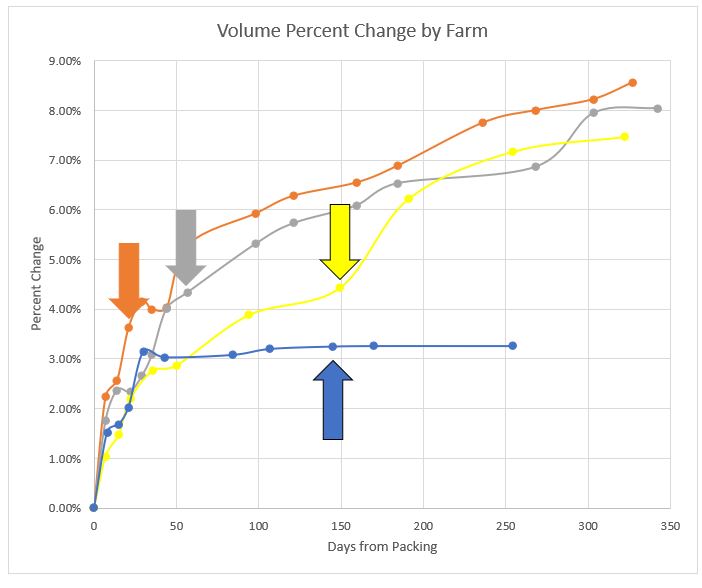
Use drone technology to accurately and precisely measure changes in silage volume
 By Michelle Chang-Der Bedrosian, Ph.D., Vita Plus forage products and dairy technical service specialist, and Adam Durrin, CEO, Aurox
By Michelle Chang-Der Bedrosian, Ph.D., Vita Plus forage products and dairy technical service specialist, and Adam Durrin, CEO, Aurox
Efficient silage management is crucial for maintaining a steady and reliable supply of feed for livestock. One of the challenges in this process is accurately estimating shrink during storage. Traditional methods of estimating silage losses, such as measuring the density of the pile with a drill and probe and then measuring pile disappearance, can be time-consuming and prone to errors. Advancements in drone technology provide a more efficient and precise solution. Using drones for aerial surveys of feed pads provides farmers with accurate inventories of stored feed, enhancing their ability to estimate and manage use and losses.
In 2023, Vita Plus and Aurox, a drone imaging company that specializes in aerial measurements for agricultural operations, used drones to measure volume changes in silage piles on three large dairy farms in the Midwest. The volume changes were due in part to natural “settling” that occurs over time and also in part to dry matter (DM) losses associated with normal seepage, fermentation, storage, and feedout.
The results of this study are depicted in the graph below, with each farms’ corn silage represented by a different color line: orange, gray and yellow. The blue line represents a haylage bunker. Arrows in the graph indicate when the silage was opened for feeding. Note: This field survey is important as we looked at different crop types (corn versus alfalfa), different opening times, and different pile styles (open on one end during/after filling versus completely sealed after filling).
 The three corn silage piles experienced a consistently higher total volume change than the haylage pile. Additionally, the pattern of volume change was different: approximately 60% of the volume change in the three corn silage piles occurred in the first 50 days of ensiling; the remaining 40% occurred gradually during the remaining 200 days. In contrast, 90% of the haylage pile changed within the first 50 days, indicating that it was more stable and had less shrink.
The three corn silage piles experienced a consistently higher total volume change than the haylage pile. Additionally, the pattern of volume change was different: approximately 60% of the volume change in the three corn silage piles occurred in the first 50 days of ensiling; the remaining 40% occurred gradually during the remaining 200 days. In contrast, 90% of the haylage pile changed within the first 50 days, indicating that it was more stable and had less shrink.
This leads us to inevitably ask why the alfalfa was more stable and had less shrink? Was it due to the crop itself, the time that it was opened, or was it due to the different pile style? Looking at the effects of various management practices on patterns of pile disappearance can shed some light on which practices are most effective at minimizing shrink.
According to Dr. Limin Kung Jr., a silage expert at the University of Delaware, DM losses in corn silage are not consistently higher than those in alfalfa silage. Thus the differences observed in this field study may not be due to crop type.
Another major difference between the corn silage piles and the alfalfa pile was how it was sealed: Whereas the alfalfa pile was fully sealed on all sides after filling, the corn silage in each situation was butted up against a pre-existing crop and never fully sealed, to allow for constant feeding of last year’s crop. It is possible that this lack of full closure contributed to the higher volume loss in the corn silage piles.
Once the corn silage piles were opened and re-exposed to air (as shown by the arrows), the increase in volume losses is clear in all three corn silage piles. The link between oxygen infiltration and shrink is well-researched and underscored by this field study.
Silage piles are dynamic and constantly changing. The use of drone technology gives the opportunity to witness these changes frequently, accurately and safely. Vita Plus and Aurox plan to collaborate on more research projects to evaluate the effects of different common management practices on silage shrink.
| Category: |
Consumer communication Equipment Feed quality and nutrition Forage Foundations Forage harvesting Forage storage and management Silages |

